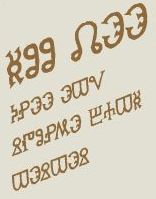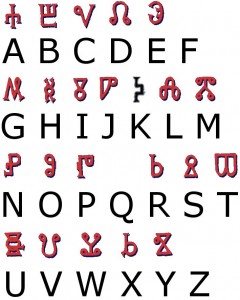As a Brit, there’s a very particular class of American-made sequel that fills my film-watching soul with despair. On planes and slow Sundays, you’ve doubtless caught a few exemplars yourself: “Garfield 2”, “Agent Cody Banks 2: Destination London”, “National Lampoon’s European Vacation” all spring readily to my mind, but these form but the tip of a particularly yellow-coloured iceberg.
The template is horrifically simple: having achieved moderate success with a first film by pandering to a peculiarly parochial home market, the US-based producers then look for somewhere vageuely ‘exotic’ (but still English-speaking) in which to set the follow-up. Almost inevitably, dear old Lahn-don Town gets the nod: and thus usually commences the exhausting directorial circus of finding American acting talent who can produce comedy UK regional accents as badly as American screenwriters can write them.
So far, so insular: but what gets my goat is not the fact that London has been chosen (actually, it’s a complex, interesting, intensely compromised place with a billion stories of its own), but rather that what gets realised in celluloid is a kind of bizarre fairytale version, complete with pea-souper fogs, whistling Cocker-ney cabbies (what, Polish and Cockney??), scheming upper-class twits (inevitably with huge estates in the country), and salt-of-the-earth plebs (without two brass farthings to rub together). Sorry to say it, guys, but these days London is actually more Dick Cheney than Dick Van Dyke.
All the same, I’d have to say that those much-maligned American film producers could just about pull off this whole stunt and, indeed, produce a masterpiece from this cloying amalgamation of unpromising clichés. But by this stage their budget has all-too-often already disappeared into the cavernous pockets of the oh-so-amusing comedy lead characters: and thus vanishes into painfully thin air any notion of hiring a writer of real genius, the kind you’d need to bring such a dead-before-it-was-ever-born project to life.
And so onto James K. Rollins’ new book “The Voynich Project” (2008).
Rollins builds his story around a polarity eerily familiar to Indiana Jones fans, teaming a lantern-jawed hero and a feisty female archaeologist against indestructible disfigured Nazis wielding futuristic weaponry. Into this (already somewhat eggy) mix he adds a group of Indigo children (each with their own superpower), just about every English-speaking secret military force in the world, ancient maps, Carl Jung’s Red Diary, and the Vatican, etc etc. Oh, and there’s an American Indian consciously modelled on Chewbacca. Sure, it’s not Shakespeare: but is it Dan Brown?
Look – I’m a sucker for the kind of pacy, evocative writing that you would need to turn such a morass of potboiler elements into a genuine piece of fun. However, from my own European point of view, that train never really arrives – instead, the book comes across as a stream of mystery-themed ideas machine-gunned in the reader’s direction, as if the countless holes in the story can be filled through a kind of macho puppydog exuberance. Sorry, JK: though notionally a “Euro-thriller”, its scope and writing are both just too narrowly American to win me over.
But there’s also the whole Voynich Manuscript side of the book.
Rollins has clearly taken the time to read up on the VMs and to engage with its strange pictures, for which I applaud him (I even get a brief mention in the notes at the end, which is nice, however unwarranted). Unfortunately, one thing manages to spoil the whole party.
Briefly, what happens is: hero goes to the British Museum/Library to meet man studying the alchemical side of the Voynich Manuscript; because the man has disappeared, the hero instead meets his sister (who also happens to work there); they go to a pub in the East End; hero learns about the woman’s mysterious Celtic tattoo on her back; Nazi thugs enter the pub; she produces a key from above the back door; they escape out to the rear into a messy gunfight… and when the woman is eventually captured by the Nazis, her tattoo turns out to contain an ancient map / key to the secrets hidden in the Voynich Manuscript.
The problem is that this central storyline exactly reprises probably the best-selling (and quite possibly the best-written) Voynich novel yet, Max McCoy’s (1995) “Indiana Jones and the Philosopher’s Stone” – you know, the one I recommend that all aspiring Voynich novelists should read first. If there had been just a handful of similarities, I could possibly have passed over them in silence – but this is all much too much for me to bear.
No reviewer ever wants to be in this position – but honestly, what else can I say?



